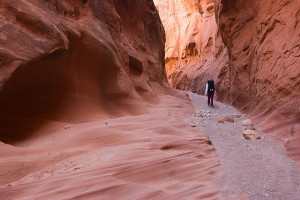How did the walkabout become benign?
A hundred-and-some years ago, “a long walk” could have meant raw-boned pioneers thrusting themselves into uncharted territory. Predators, starvation and meteorological calamities. Today, it usually means something so safe you could do it on a first date with a stranger you met through Match.com.
You don’t get a rush from hiking, the logic goes. For that little squirt of dopamine, you need speed and vertical and (potentially) neck-snapping acrobatics.
If this were true, it would be a curse for thrill-hungry older people. We are a bit slower and a bit more brittle and, consequently, we shy away from anything that requires mercurial reflexes. But, happily, it is not true.
Hiking can be as slow and painstaking as you want it to be, but it can still be thrilling—and we’re not talking about the thrill of a beautiful sunrise over a mountain lake, though there is that. We mean thrilling in the sense that being in the wilderness can still be challenging, even dangerous. Risky enough to be fun without courting death or big Medicare co-pays.
There are probably some fairly exciting hikes within a day’s drive from wherever you live, but it you want to pick from a bigger palette of adventures, check out Backpacker magazine’s 2008 piece, “America’s 10 Most Dangerous Hikes.” (And don’t miss the description of how it calculates risk, which is both thoughtful and hilarious.) The risks here are real: predators, falls, drowning in rivers and slot canyons, and ridiculous extremes of weather: sudden cold that can lead to hypothermia, whiteouts so dense that a hiker will walk off a cliff.
From that base, you can begin tailoring your search to the kind of risks you prefer. Looking for higher peaks? Test your luck on Mount McKinley. Fancy flirting with wild beasts? Yellowstone has plenty. (Typically, people think of grizzlies, but those are just your headliners. At a presentation last summer, I heard a ranger describe how she woke up in her tent to find a herd of bison milling around her campsite.)
And if you really want to feel your heart in your chest, you could play the odds and take a stroll in New York’s Central Park, or Washington’s Rock Creek Park. Or wander California’s national forests and hope you don’t stumble across a booby-trapped pot plot. (See Outside’s good piece from last year.) All the excitement a soul could ask for, and no back-flips required.
Photo: Little Death Hollow, Grand Staircase-Escalante National Monument, Utah. By Greg Willis via Wikimedia Commons.










